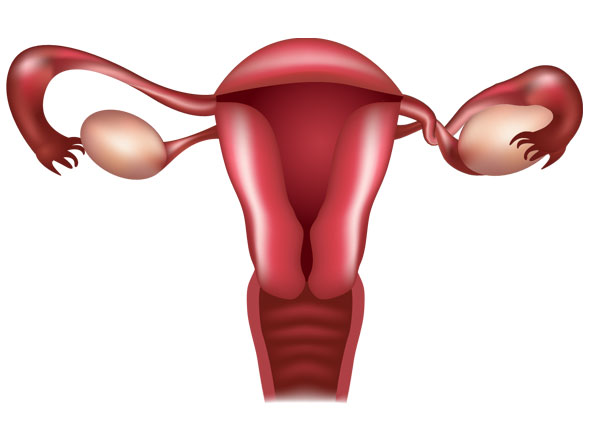Ovarian Cystic Torsion
Ovarian torsion occurs when the ovary twists around the tissues; the tissues present around the ovary are primarily there to support the ovary at all instances. The fallopian tube, which is present in the body, can occasionally become twisted and produce the same problem as the tissue twisted around the ovary. Ovarian cystic torsion is considered a surgical emergency condition. Rapid diagnosis and treatments are required to protect ovarian function where clinically appropriate and to maintain fertility.
It is a painful condition for anyone because the blood supply to these organs is largely cut off during this period. Sometimes a cyst can become large and cause a burst or rupture. The greater the cyst, the more likely ovarian torsion occurs. Torsion of the ovaries should be treated as soon as possible. It is always a medical emergency that must be treated quickly. Because ovarian torsion can result in ovary loss in any woman.
If you or a loved one are experiencing severe pelvic pain and suspect ovarian torsion, it’s crucial to seek immediate medical attention, especially in a city like Mumbai where access to specialized care, including Ovarian Cystic Torsion Treatment in Mumbai, can make a critical difference in preserving ovarian health and future fertility.

Symptoms and Signs of Ovarian Cystic Torsion
Symptoms of an ovarian cystic torsion appear quickly and it is a medical emergency. They are as follows:
Pelvic pain
Extreme vaginal bleeding
Changes in bowel habits
Changes in the menstrual cycle
Weight gain
Bloating in the lower abdomen
Vomiting, nausea, or loss of appetite
Dizziness
Who is at risk for Ovarian Cystic Torsion?
Ovarian torsion is most common in women throughout their reproductive years, but it can also occur in prepubescent females. The most significant risk factor for ovarian torsion is having a cyst on your ovary because a cyst can cause the ovary to become imbalanced and twist on itself.
Other factors that increase the chances of cysts, and thus torsion, include as follows:
Pregnancy: An egg is released from the follicle when a woman ovulates. It subsequently shuts itself up and forms the corpus luteum, which is a hormone-secreting structure. If you do not become pregnant, the corpus luteum degrades and is absorbed by your body. If you become pregnant, the corpus luteum may fill with blood or fluid and form a cyst. This form of cyst is widespread and most commonly arises during the first trimester of pregnancy. It usually goes away on its own, but it might induce ovarian torsion.
Hormonal medications: Taking ovulation-stimulating hormones (for infertility) might stimulate the ovaries to form cysts, increasing the risk of ovarian torsion.
What is the Diagnosis for Ovarian Cystic Torsion?
Ultrasound: A transvaginal ultrasound will also be performed to examine your ovary, fallopian tube, and blood flow. It helps to find the size and location of the cyst. Ultrasound is the most commonly utilized diagnostic test.
MRI: To obtain a 3-D image of the ovary.
CT scan (computed tomography): A detailed image of the ovary is created using specialized X-ray equipment.
What is the Treatment for Ovarian Cystic Torsion?
Ovarian torsion can only be treated surgically. If a cyst is present, the doctor will initially remove it before untwisting the ovary and/or fallopian tube to reestablish appropriate blood flow. The following are some of the most regularly utilized procedures:
Laparoscopy: Surgeons make a few tiny incisions in your abdomen to insert a laparoscope (a thin tube with a camera and light at the tip) and surgical equipment to remove a cyst (if needed) and untwist the ovary and, if necessary, the fallopian tube. The surgery is completed after confirming that blood supply to the ovary is maintained. This can be done under anesthesia.
Laparotomy: The doctor will use surgical instruments to produce a bigger incision in your lower abdomen. The opening is made in such a way that the doctor may reach inside the body and manually untwist the ovary. Patients are given anesthesia before therapy. Following treatment, patients are asked to spend the night in the hospital to recover.
Oophorectomy: A laparoscopic technique is used to remove the ovary.
Sapling-Oophorectomy: When both the ovarian and fallopian tissues are confirmed to be no longer viable, the ovarian and fallopian tissues are removed using a laparoscopic operation.
Robotic surgery: A surgical robot can also be used to help with laparoscopic oophorectomy. The surgeon watches a 3D monitor and uses hand controls to move the surgical tools during robotic surgery. Your situation will determine whether you have an open, laparoscopic, or robotic oophorectomy. Laparoscopic or robotic oophorectomy typically results in a faster recovery, less pain, and a shorter hospital stay.
Call and book your appointment for ovarian cystic torsion today with Dr. ANSHUMALA SHUKLA who is the best gynecologist and laparoscopic surgeon in Mumbai.
